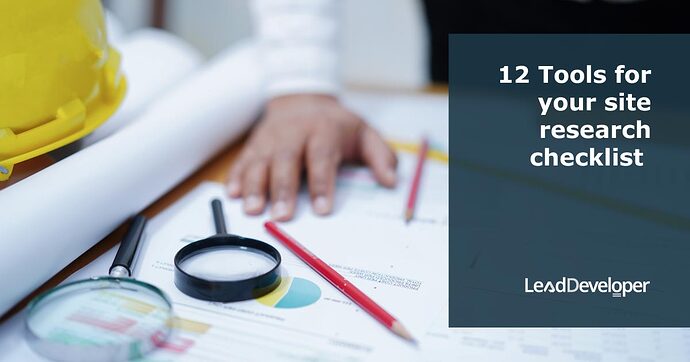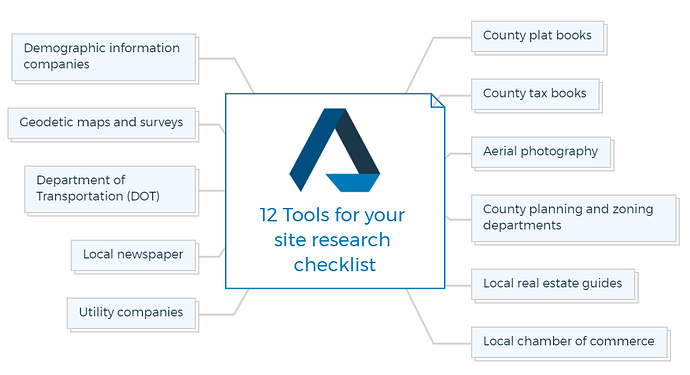12 Tools for your site research checklist
When embarking on a property development project, real estate investment, or assisting clients as a realtor, thorough site research is crucial for making informed decisions.
Here’s a detailed checklist of 12 tools that property developers, investors, and realtors can use to gather comprehensive information about a potential site.
1. County plat books
- Obtain county plat books that illustrate property boundaries, ownership details, and zoning information.
- Identify potential development opportunities and constraints on the property.
2. County tax books
- Access county tax records to gather data on property values, ownership history, assessed values, and property taxes.
- Evaluate the financial feasibility of the project based on historical tax information.
You are missing out if you haven’t yet subscribed to our YouTube channel.
3. Aerial photography
- Utilize aerial imagery from platforms like Google Earth to visualize the site’s topography, neighbouring properties, and access roads.
- Identify any potential environmental factors that may impact the project.
4. County planning and zoning departments
- Contact local planning and zoning departments to understand zoning regulations, land use restrictions, and development codes.
- Verify permit requirements and assess whether your project aligns with the area’s development plans.
5. Local real estate guides
- Review local real estate guides to gain insights into current property prices, rental rates, market trends, and demand.
- Evaluate the potential return on investment based on the market data.
6. Local chamber of commerce
- Explore the local chamber of commerce’s resources for economic data, business growth projections, and development initiatives.
- Understand the local economy’s health and its implications for your project’s success.
7. Utility companies
- Contact utility companies to inquire about existing utility infrastructure and the availability of water, sewer, electricity, and gas connections.
- Assess the feasibility of your project based on available utility services.
8. Local newspaper
- Stay updated with local newspapers to learn about recent developments, regulatory changes, and community concerns.
- Gain a broader understanding of the local context that could impact your real estate investment.
9. Department of Transportation (DOT)
- Engage with the Department of Transportation to gather information on road networks, traffic patterns, and potential infrastructure projects.
- Consider transportation factors that might affect accessibility and convenience.
10. Geodetic maps and surveys
- Review geodetic maps and surveys to understand elevation, contours, flood zones, and soil composition.
- Identify potential drainage issues, flood risks, and any need for specialized foundation work.
11. Demographic information companies
- Partner with demographic data providers to access population trends, income levels, education, and consumer behaviour information.
- Understand the target market and gauge demand for your project.


